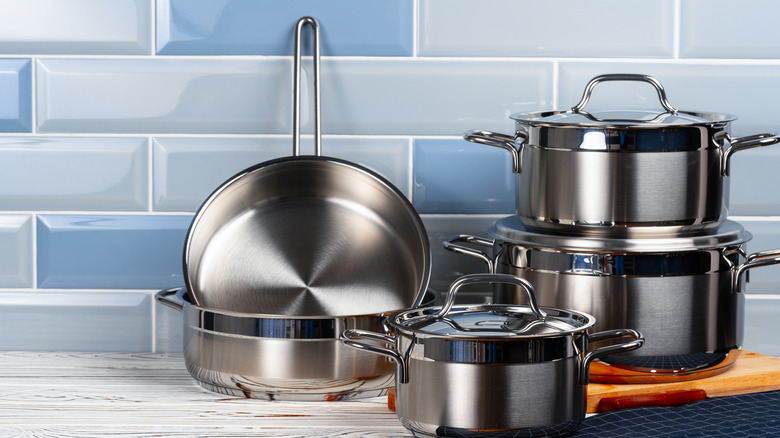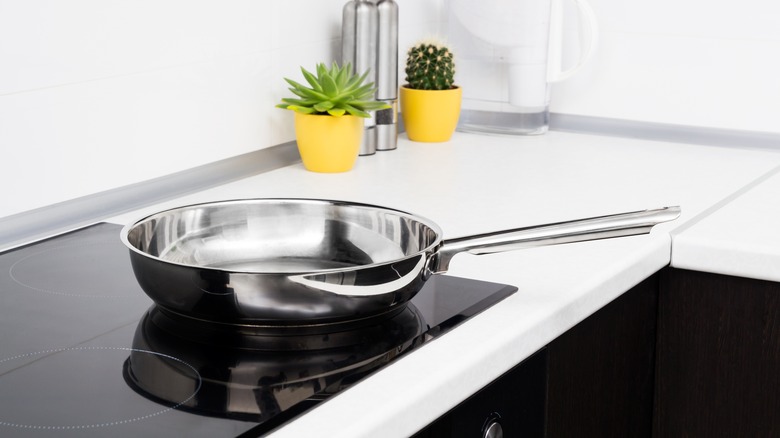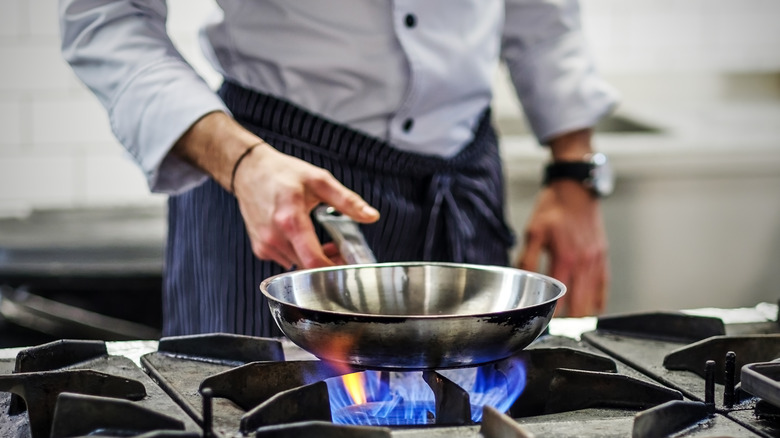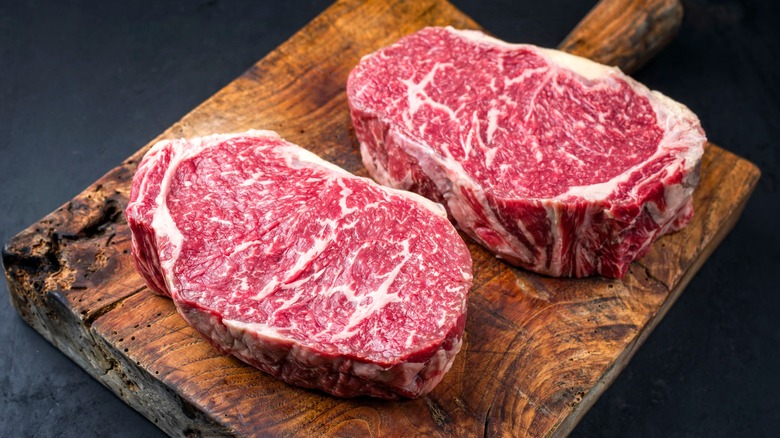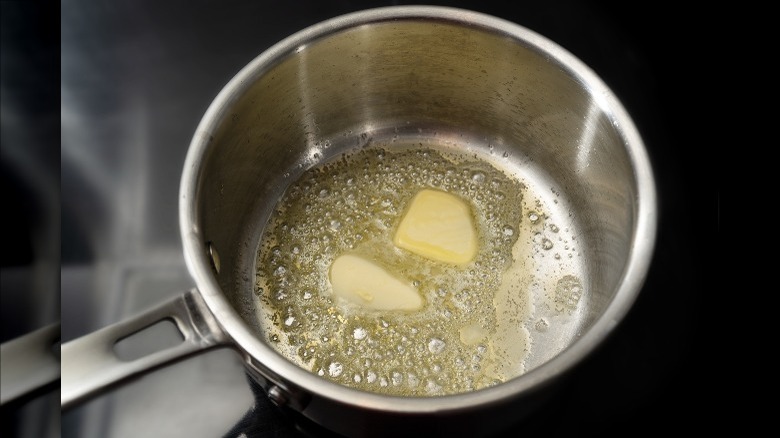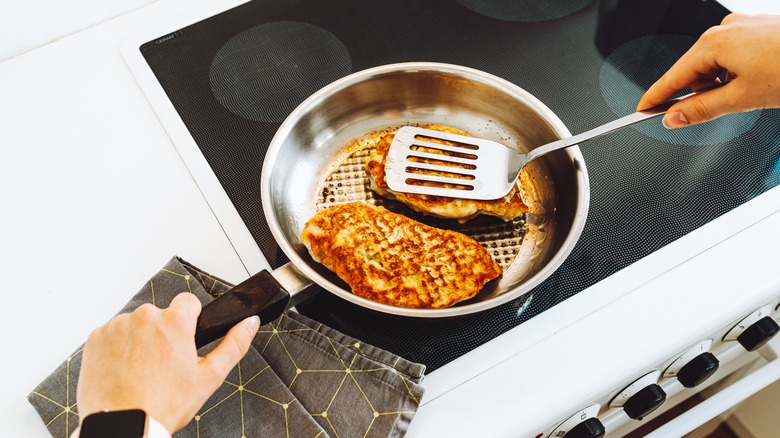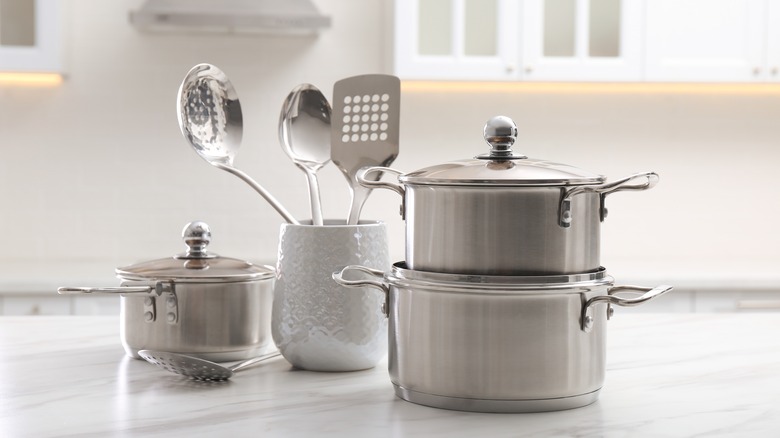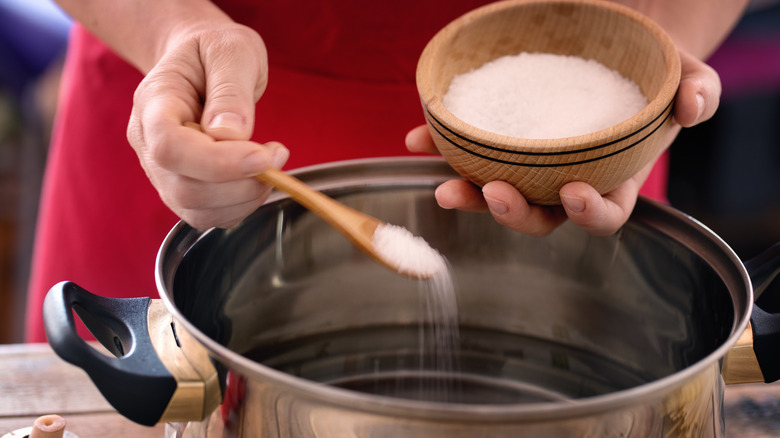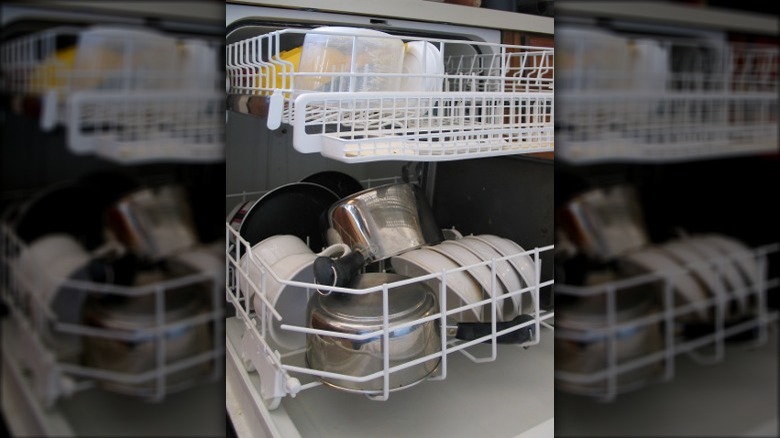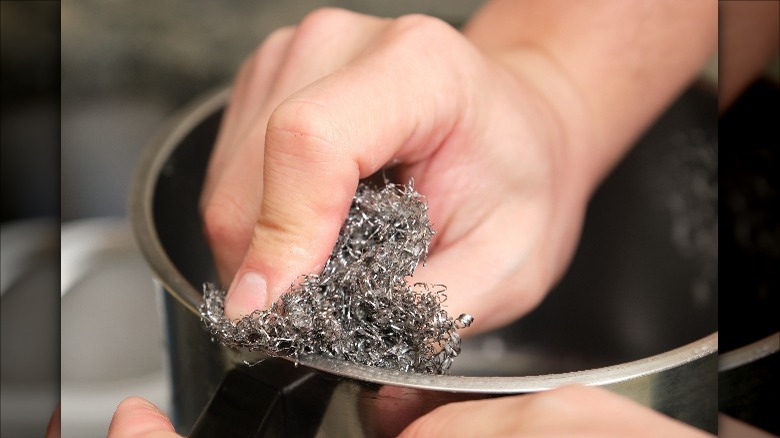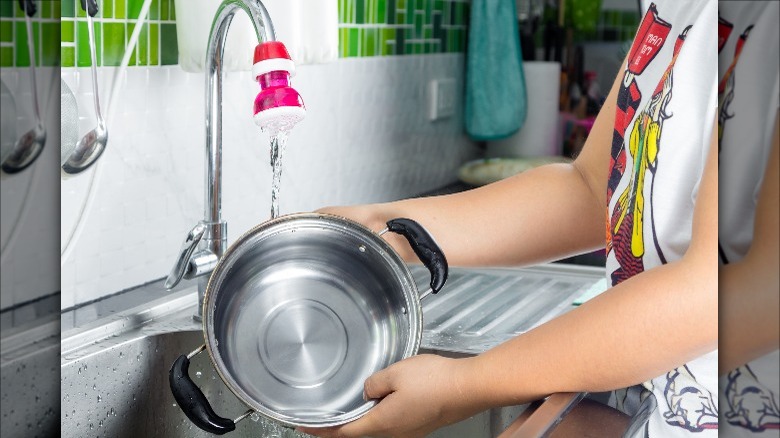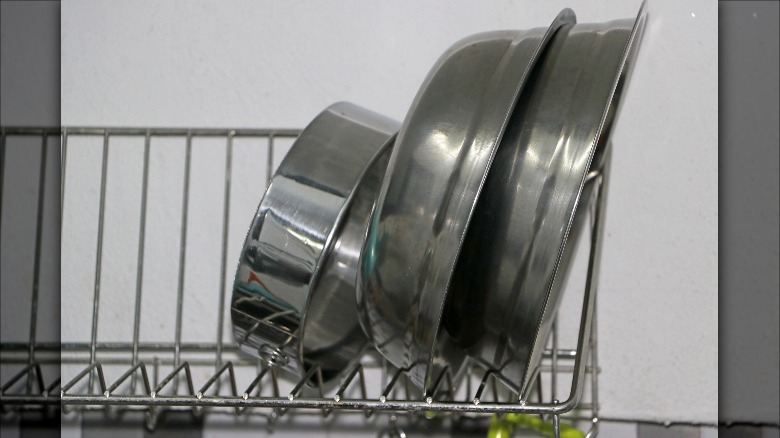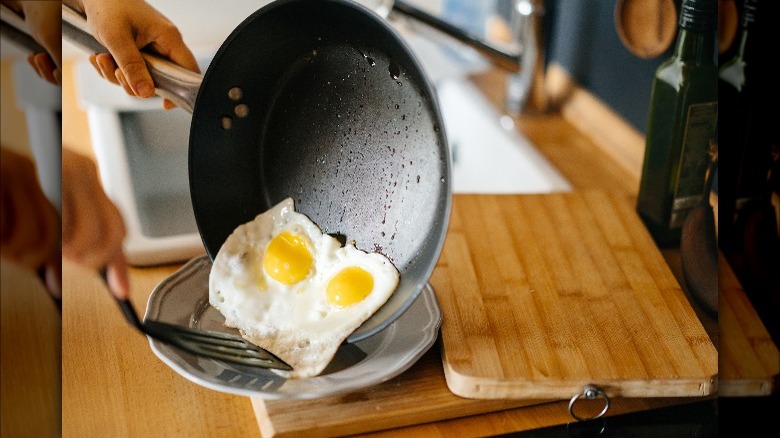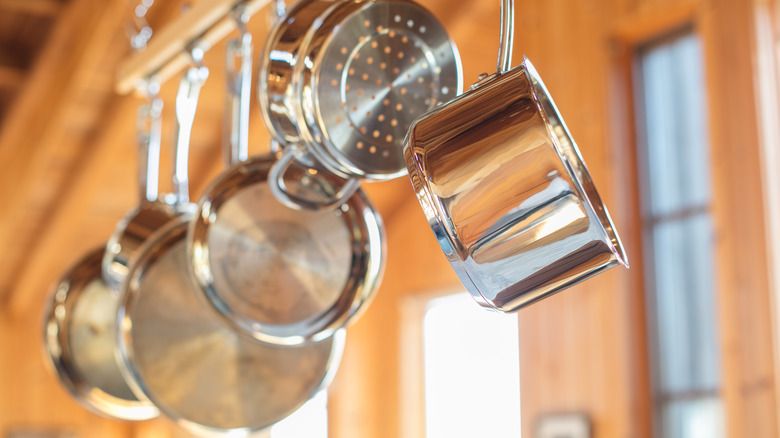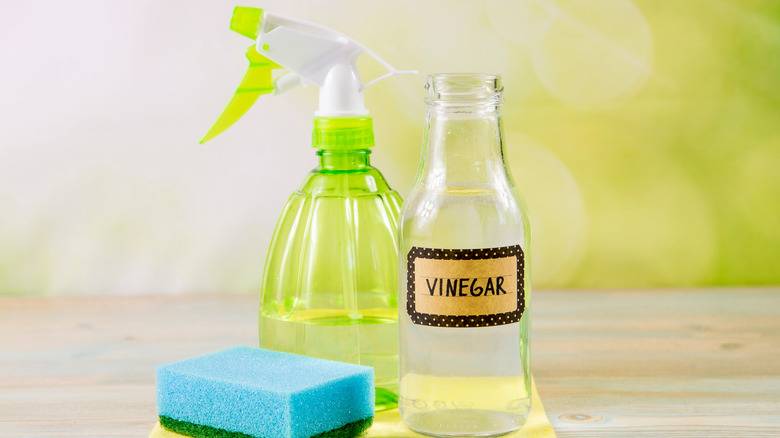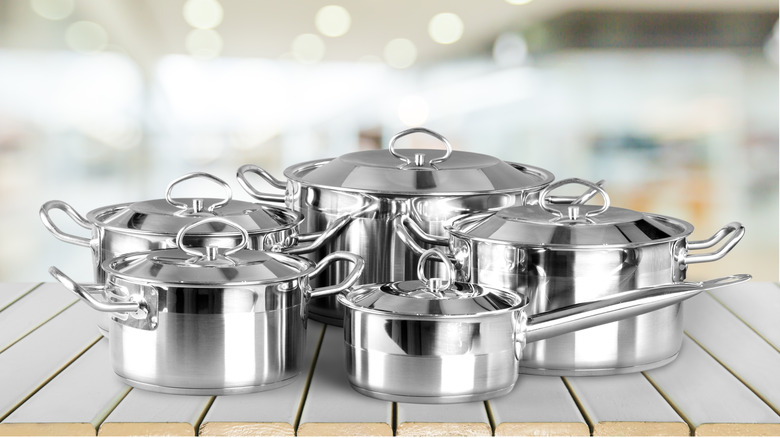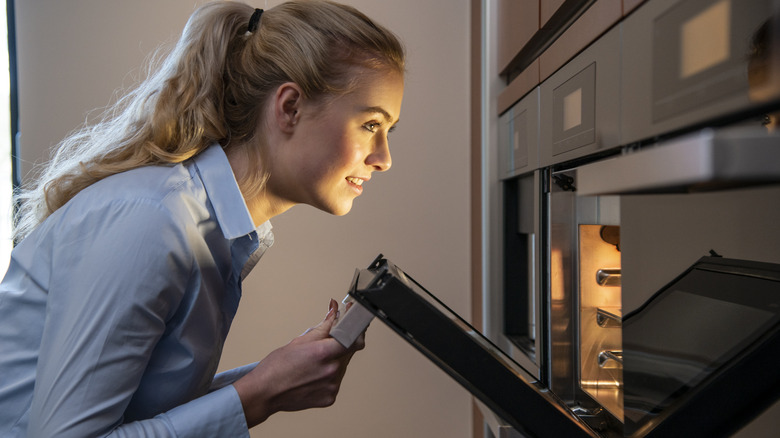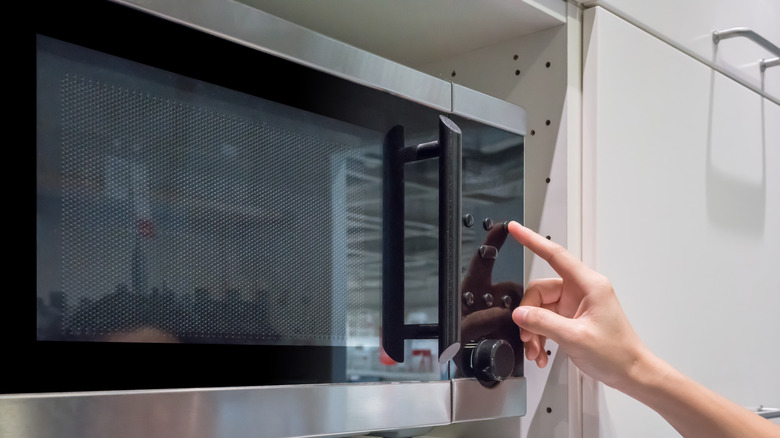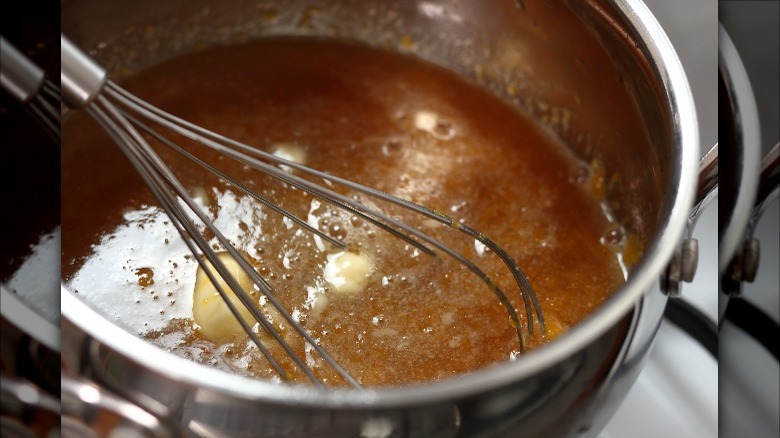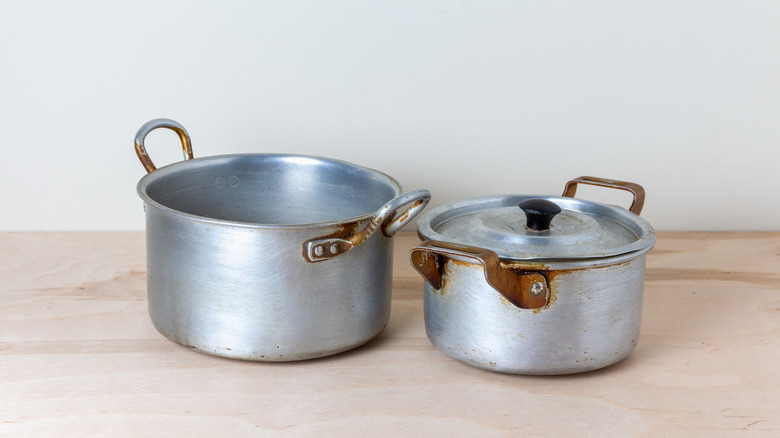19 Mistakes To Avoid With Stainless Steel Cookware
Whether you've been a lifelong stainless steel cookware user or you're thinking about making the switch from nonstick, cast iron, or ceramic cookware, you may or may not already understand all the benefits that are associated with these types of pots and pans. Stainless steel is one of the best materials for retaining heat and ensuring it is distributed across the pan to ensure even cooking. It is also durable, relatively easy to maintain, and can withstand higher temperatures than nonstick cookware.
With all of the benefits of using stainless steel cookware, you might assume that cooking with it is completely straightforward and foolproof. However, this is unfortunately not the case. There are several mistakes that people often make that can damage the pots and pans, ruin the foods they're preparing, or make more work for in the kitchen than is necessary. Read on to learn to utilize your cookware to the fullest.
1. Failing to preheat the pan
When you're cooking with stainless steel, there is one important step you must take before placing food in your frying pan or stock pot: preheat it. Without preheating, the foods are more likely to get stuck on the pan. This is because a stainless steel pan's surface is covered with tiny pores. If the pan is heated up before adding any food to it, these pores will shrink, helping to prevent them from pinching the food molecules cooking over them.
It doesn't take long to preheat a stainless steel pan; simply leave it over medium or medium-low heat for about two minutes. You can confirm that the pan is hot and ready to use by dropping a tiny bit of water onto the surface and listening for a sizzling sound. If it sizzles, the pan is hot enough for you to start cooking.
2. Letting the pan get too hot
While it is important to make sure that your cookware is hot enough before cooking on it, it is also a mistake to let it get too hot. Because of its ability to conduct heat, it doesn't take long for stainless steel to heat up.
Another way to avoid overheating your stainless steel cookware is to make sure you don't set the burner too high when preheating it. A medium heat setting should be more than sufficient. Besides the threat of food sticking to a pan that is too hot, overheating stainless steel can also cause it to warp or burn.
3. Not bringing foods closer to room temperature before cooking them
One of the biggest complaints people have about their stainless steel cookware is that foods stick to it too easily. As previously mentioned, not preheating the pan or overheating it can cause foods to get stuck, but one more common mistake people often make is placing cold food onto their preheated skillet.
An important step when cooking with stainless steel cookware is to remove the food from the refrigerator early enough to let it come to room temperature. Otherwise, when cold food comes into contact with the hot pan, it will cause the temperature to decrease, which often results in the food items getting stuck.
4. Not adding a fat to help prevent sticking
It is very important to add some fat before cooking on a stainless steel pan. The best type to add can vary based on the recipe you're preparing and the temperature the burner is set to, but without some fat coating the bottom of the pan to make it more nonstick, you can find yourself dealing with a huge mess.
Keep in mind that smoke points can vary for each type of fat. For example, while vegetable oil has a high smoke point and can be used over higher temperatures, butter is best when used only at a lower temperature.
5. Trying to flip food before it's ready
You don't want to flip steaks, eggs, fish, or any foods you're cooking too soon. Cooking with stainless steel cookware requires some patience. If you're in too much of a hurry and try to flip what you're cooking before it is ready, it is much more likely to stick to the pan. This is because as foods cook on stainless steel, the pan starts to release them once they have cooked enough and are ready to flip.
If you're unsure whether something is ready to flip, use your spatula to push it. If you feel it slides on the pan, then you can flip it. However, if it feels like it is stuck and doesn't want to move, let it continue cooking.
6. Cooking with metal utensils
Most people know that it is a mistake to use metal utensils with nonstick cookware. But did you know that you could be making a mistake using them with your stainless steel cookware too? While you're less likely to scratch a stainless steel pan than you are a nonstick pan, it is still possible to leave superficial scratches on the surface.
While these scratches aren't going to impact how the pot or pan cooks, they will make it look more worn. Plus, metal utensils conduct heat, so they can become hot to the touch when you're cooking. There is also the chance that they might rust.
7. Salting water before it boils
Salting the water when cooking pasta and boiling vegetables and other foods is important. Without it, the flavor of your foods will be off. However, while you don't want to forget to salt the water, you also want to make sure that you don't add the salt too soon.
If salt is added to water in your pot before it reaches a boil, it can result in pits in the base of the pan. These little pits — or nicks — are the result of a chemical interaction between chromium in the stainless steel, chloride in the salt, and oxygen in the water.
8. Cleaning the cookware in the dishwasher
A dishwasher can really cut back on the time you spend in the kitchen cleaning up after a meal. However, there are several things you should never put in your dishwasher, and stainless steel cookware is one of them.
While stainless steel is technically dishwasher safe, you're risking damaging your cookware by cleaning it in your dishwasher. Dishwasher detergents are formulated with some harsh chemicals that may cause the sheen of the stainless to look duller. With repeated cycles through the dishwasher, your pots and pans may look discolored or like they are covered with spots. Washing cookware by hand isn't too difficult, plus it will help free up more space in your dishwasher. Better safe than sorry.
9. Cleaning pots and pans with abrasive products
Hand washing your stainless steel pots and pans is the best course of action. However, how you hand wash them matters, and using the wrong cleaning products could end up being a big mistake. It is essential to avoid using anything abrasive on stainless steel. Examples of abrasive cleaners include steel wool, oven cleaner, and bleach. These and other abrasive cleaners can cause irreversible damage to the surface of the pan. Instead, all you'll need is a sponge and hot soapy water.
For particularly stuck-on messes that won't come off after soaking and washing, try covering the base of the pan with soapy water and bringing it to a boil on the stovetop. You can then use a scraper to remove food residues from the pan. After scraping off the bits of food, give the pan time to cool before re-washing it with warm, soapy water.
10. Not letting pots and pans cool before cleaning
Here's another cleaning-related mistake with stainless steel cookware: Washing the pots or pans when they are still hot. As much as you might want to get all of the dishes taken care of so you can move on to whatever is next on your list, it is important to give stainless steel time to cool before cleaning it.
Placing a hot pot under running water that is cooler than it is may damage the finish or cause the pot to warp. A warped pot will no longer be able to sit flat on your stove, which will impact its ability to heat and cook food evenly.
11. Leaving the cookware out to air dry
After you've finished hand washing a stainless steel pot or pan, leaving it in the dish drain to dry can be tempting, so you can just deal with it later. However, doing so would be a mistake.
When stainless steel is left out to air dry, water spots can form. These spots are unsightly and don't always go away easily with just soap and warm water. If you do have water spots, you'll need to use baking soda and a damp sponge to clear them up, but air drying your cookware can prevent them from being a problem.
12. Always using stainless steel cookware
Stainless steel cookware is the best choice for many cooking tasks. Its tolerance of higher heat, unmatched ability to sear meats, and overall durability make it a top choice for professional chefs. However, while there are countless cooking tasks where you'll be glad you pulled out your stainless steel cookware, there are a few that you might be regretting your decision.
You need to understand when it is better to reach for a nonstick frying pan instead. A few examples include when you're making eggs, cooking pancakes, or preparing delicate dishes, such as crêpes or fish. Even if you swear by your stainless steel cookware, ensure you have at least a few nonstick pieces in your arsenal to pull out when needed.
13. Not storing pots and pans correctly
A good set of stainless steel cookware isn't cheap. Protecting your investment and helping to extend the lifespan of your pots and pans as much as possible is important. One mistake many people make with their cookware is tossing it in a pile in a cabinet for storage. This can cause the finish to scratch.
Instead of threatening the beauty or longevity of your pots and pans, invest in cookware protectors or large pieces of felt and place them between each pot or pan to prevent scratches. Hanging storage racks can also be considered for storing stainless cookware.
14. Not removing calcium spots
Does your home have hard water? If so, your stainless steel cookware might be covered with a white residue. This residue is caused by a buildup of calcium and magnesium. Whenever you boil water in your pan, the water itself evaporates, but the traces of calcium and magnesium are left behind. Fortunately, this chalky white mineral buildup isn't a health or safety concern, but it is still unattractive and likely something you want to remove from your cookware.
You can remove calcium spots using a mix of three parts water and one part vinegar. Mix enough of the solution to cover all the hard water spots in the pot or pan, and then pour it into the cookware. Bring the water to a boil, turn off the water, and let it sit for several minutes. This should dissolve the calcium buildup.
15. Assuming that all stainless pans cook the same
If you've shopped around for new cookware recently, then you've likely noticed the wide range of prices. Some stainless steel sets are very pricey, while others are pretty cheap. If you've been assuming that all stainless steel cookware sets are going to deliver the same performance and cooking results, then you've been making a mistake.
You might want to consider investing in one of the more expensive sets. More expensive sets feature tri-ply construction. This means that in addition to the two layers of stainless steel, they also often have an aluminum core that helps ensure more even heat distribution.
16. Not realizing that stainless steel cookware can also go in the oven
One benefit of stainless steel cookware that many people overlook is the fact that it can also be used for cooking in the oven. Stainless steel is safe to use at higher temperatures, especially compared to nonstick finishes, which are more likely to break down.
If you're making any recipes that call for searing a piece of meat on the stove and then letting it finish cooking in the oven, a stainless steel frying pan would be the perfect choice. Now you don't need to worry about transferring the meat to a different pan to let it finish cooking in the oven.
17. Assuming you can cook with your stainless steel pan in the microwave
While you can use a stainless steel pan in the oven, you should never try to use them in the microwave. It is unsafe to put metal in a microwave, and stainless steel is a type of metal. When you put metal in a microwave, its electrons can get pulled by the waves bouncing throughout the inside of the unit working to reheat food. If this happens, it can cause the metal to heat up too quickly and pose the risk of burning the microwave.
There is also a chance for sparks to form, which can pose a major fire risk. So, stick with using your stainless steel pans on the stovetop or oven, and keep them out of your microwave.
18. Not using your stainless steel pans when making sauce
You can make incredible pan sauces in a stainless steel pan. When you cook in stainless steel, bits of food become stuck in the pan. While some may see this as a downside, it is actually one of the benefits of stainless steel cookware. These little pieces of stuck-on food — called fond — are actually quite flavorful.
When you deglaze the pan after you've finished cooking your meat using wine, stock, vinegar, or another astringent, it loosens these little bits of food. Their flavor is then incorporated into the liquid, allowing you to create truly scrumptious sauces.
19. Assuming that a stainless steel pan will never rust
While it is unlikely for stainless steel pans to rust, it is not impossible. You should not take your cookware for granted and just assume that the finish will not rust. If you do not take the time to properly clean your cookware and remove burnt-on food, you're increasing the chances of rust forming.
Similarly, it is also important to polish your cookware to protect the chromium oxide coating that is responsible for making stainless steel more rust-resistant than some other types of metals. Drying cookware with a dishcloth instead of letting it air dry will also help protect your pans from rusting.
